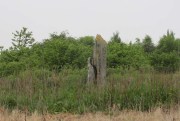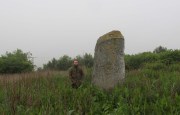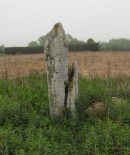Holy Well: OS Grid Reference – NO 47217 32714
Also Known as:
- Cat Craig Well
- Cauld Water Wellie
- Wishing Well
Archaeology & History
This little-known site is thought to be the ‘Well’ that is still marked on modern OS-maps at the grid-reference given here, on the north side of the A92 at Balmossie Bridge, although no names are cited on any of the official maps to confirm this. When Brotchie & Herd (1980) described the old well in their photo-history of the area, they told that it was found “at Balmossie Den,” adding that
“the area is much overgrown now, but the well still exists. It is inscribed, ‘Whosoever drinketh of this water shall thirst again T.E. 1847.’ These initials are of Thomas Erskine of Linlathen who had the stone erected on the supposed site of a medieval holy well.”
Just below here used to be the remains of an ancient chapel, which Tom Erskine thought gave this well holy sanctity. In the late 19th and early 20th century, the site gained repute as a wishing well, where people left offerings for the spirit of the waters in exchange for health and other good deeds. The area of Broughty Ferry and Monifieth was a seat of the Culdees, with ancient trees and land hereby dedicated to St Bridget and Our Lady, although there remain no extant traditions indicating that this site had any direct associations with such mythic figures.
References:
- Brotchie, A.W. & Herd, J.J., Old Broughty Ferry and Monifieth, N.B. Traction: Keighley 1980.
© Paul Bennett, The Northern Antiquarian




